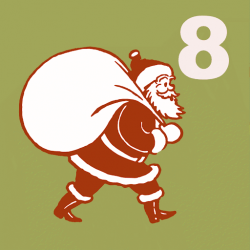

On the 8th day of Christmas Cedrec gave to me, ways to lift presents safely.
As Christmas Eve creeps closer those in the North Pole are getting ready for the busiest (and most strenuous) night of the year! Although it may be filled with magic, a lot of heavy lifting is left to Santa, Mrs Claus and the elves as they transport billions of presents around the planet.
Up to 1/4 of workplace accidents each year are associated with manual handling, which can be caused by lifting (presents), putting down (chimneys), pushing (sleighs), carrying (bags) or moving loads. A load can be an object, person or animal. Injuries are more likely to be experienced by those that have past injuries, making Santa's yearly lifting an occupational hazard.
Between the mince pies and glasses of milk, we've written some hints and tips for the workforce in the North Pole to consider to make sure they're injury free for another year of Christmas preparation...
What does the law say?
The following Regulations establish an ergonomic approach to manual handling in the workplace for the avoidance of injury, in:
Under all of the Regulations, where possible, manual handling should be avoided altogether, but if this cannot be achieved steps must be taken to reduce the risk of injury to employees... and elves!
The following factors are important to consider when assessing manual handling operations:
Reduce Risk
If manual lifting is the only option it may also be possible to reduce the risk by:
So what's the best way to handle and lift loads?
If manual handling is the only option available then these steps should be taken:
Guidance
The following guidance throughout the UK and Ireland is useful for anyone dealing with manual handling, even if you don't wear a red suit or a pointy hat.
In England, Scotland, Wales and Northern Ireland:
In Nothern Ireland Guide on the prevention of musculoskeletal disorders in the workplace.
In Ireland: